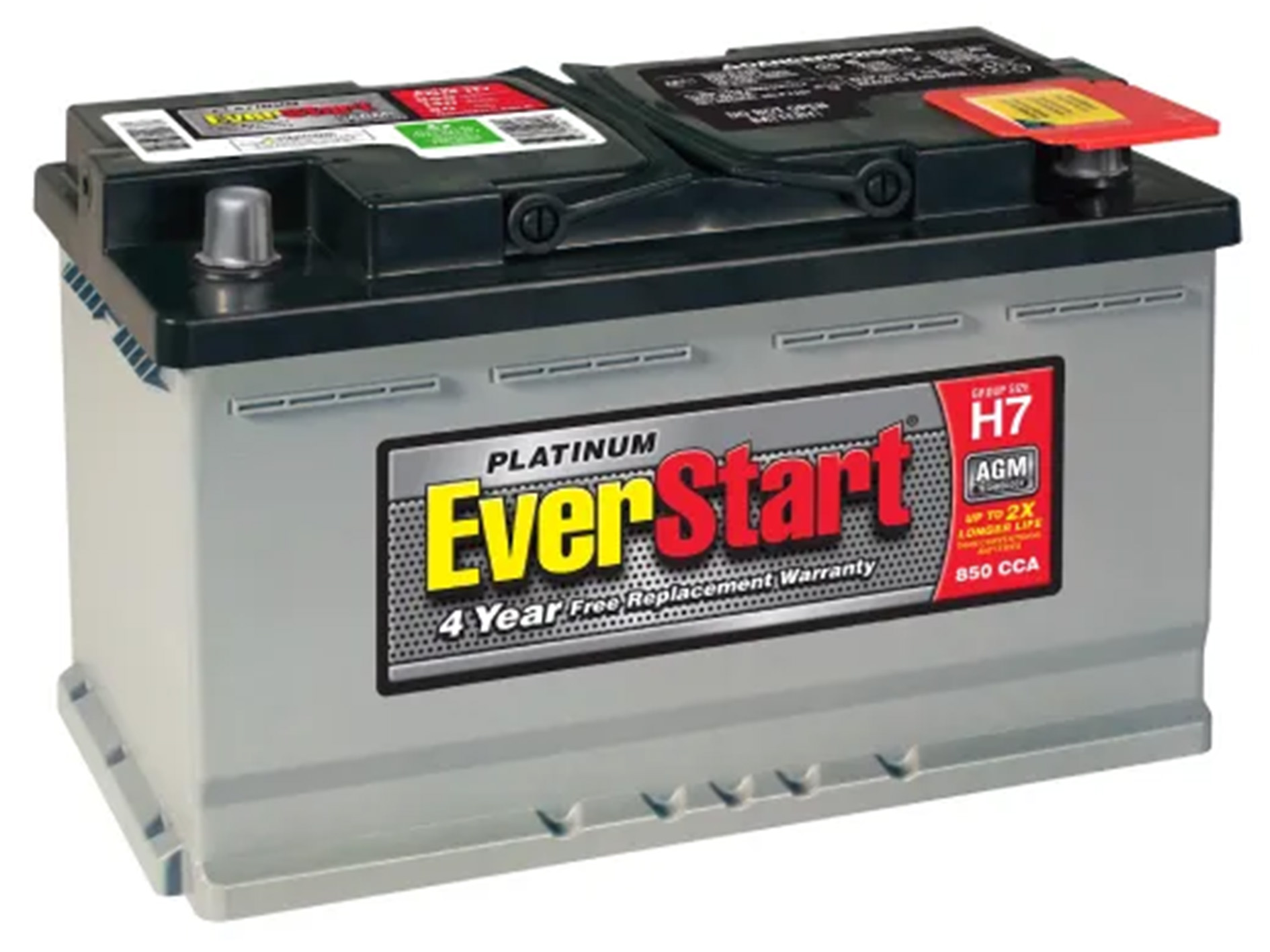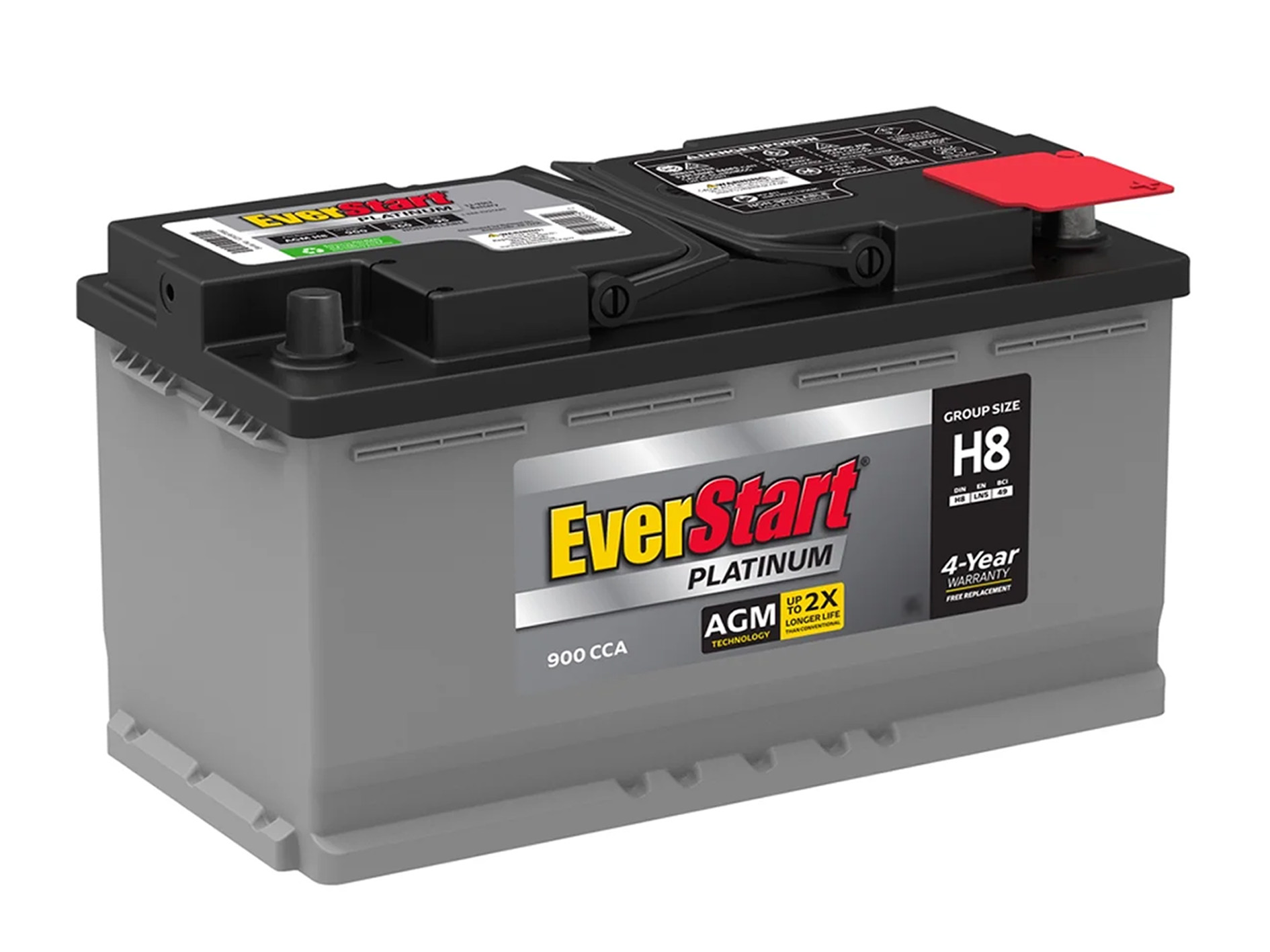H7 vs H8 Battery:Differences, Equivalents, and Replacements
2024/12/13 17:53:13
Views:
When choosing the right battery for your vehicle, it's crucial to understand the differences, equivalences, and appropriate replacement options. Among the many available options, H7 and H8 batteries are the two most commonly used in the automotive industry. This article will dive into the differences between the two battery types, explore their similarities, and discuss alternatives.
Optima DH7 battery installation Jeep Wrangler JKU
Table of Contents
- H7 vs H8 Battery: What Are They?
- H7 vs H8 Battery Size
- H7 vs H8 Battery power output
- H7 vs H8 Battery applicable model
- Technological advances in H7 vs H8 Battery
- H7 vs H8 Battery Equivalent
- H7 vs H8 Battery Advantages and Disadvantages
- H7 vs H8 Battery Similarities
- Sum up
- Frequently Asked Questions
H7 vs H8 Battery: What Are They?
The H7 and H8 cells belong to different automotive battery categories, respectively. H7 batteries are commonly used in European models that require a high-power supply, while H8 batteries are found in some luxury vehicles or American cars. Although their appearance and technical specifications are somewhat similar, there are still key differences in practical applications. Understanding these differences is essential for selecting the right battery replacement and ensuring compatibility.
H7 Battery

H7 Battery
The H7 battery, also known as Group 94R, is a common automotive battery that is typically suitable for medium or large vehicles. Its size and electrical performance make it suitable for many European cars such as Audi, BMW, Mercedes, etc. The H7 battery has a higher power output and can meet the high power demand of the car.
H8 Battery

H8 Battery
The H8 battery (also known as Group 49R) is commonly found in some American and luxury cars. Its power output is slightly higher than that of the H7 battery, and it is generally better suited than the H7 for long periods of high-power use. H8 batteries are also commonly used in some large SUVs and high-performance vehicles.
H7 vs H8 Battery Size
The battery size is an important consideration when selecting between H7 and H8 batteries. Although both batteries share a similar shape, their dimensions slightly differ, impacting their applicability in various car models.
H7 battery size: Typically measures 175 mm in height, 330 mm in length, and 175 mm in width, making it more compact for tighter battery compartments.
H8 battery size: Slightly larger, measuring 186 mm in height, 340 mm in length, and 175 mm in width, suitable for larger vehicles.
The slightly larger dimensions of the H8 battery may require installation adjustments, especially in cars with limited battery space.
H7 vs H8 Battery power output
In terms of power output, H7 batteries generally provide higher starting current (cold starting current, CCA) and longer Reserve Capacity (RC), which makes H7 batteries more suitable for the needs of starting high-power engines in cold climates.
H7 battery: Cold start current (CCA) is usually between 800 and 900 amps, and standby power is usually 140 minutes or more.
H8 battery: Cold start current (CCA) is typically between 700 and 800 amps, with reserve power slightly lower, typically around 120 minutes.
The H7 battery provides greater starting capability and longer standby power, making it ideal for high-power, cold environment vehicles. However, the H8 battery is suitable for general vehicles, especially those with medium power requirements.
H7 vs H8 Battery applicable model
H7 battery: H7 battery is usually used in larger or high performance vehicles, such as SUVs, trucks, high-end cars, etc. Since the H7 battery provides more power, it is well suited for models that require high-power startup or high-load power support.
H8 Battery: The H8 battery is suitable for midsize vehicles, including most regular sedans, compact SUVs, and some luxury cars. The power output of the H8 battery is moderate and suitable for daily driving needs.
The H7 battery is suitable for vehicles with high power demand, while the H8 battery is more suitable for ordinary daily driving cars.
Technological advances in H7 vs H8 Battery
94R/H7 Battery
In recent years, the 94R/H7 group battery has made significant technological advances, especially the introduction of AGM (absorptive fiberglass pad) technology. These improvements make the H7 battery a preferred choice for high-performance cars, luxury vehicles, and large SUVs that require superior power.
Key technical progress:
Enhanced AGM design: AGM technology provides better shock resistance and leak-proof design, ensuring longer service life and higher durability even in harsh driving conditions.
Higher Cold Start Current (CCA) : The H7 battery focuses on cold weather performance and has a higher CCA rating that allows the vehicle to start more reliably at low temperatures. This makes it ideal for regions with cold climates.
Faster charging: The H7 battery is designed to charge faster, ensuring that high-power systems such as advanced navigation, start-stop technology, and other electronics get the energy they need without compromising battery life.
Improved reserve capacity: H7 batteries now offer a larger reserve capacity, meaning that they can power the vehicle's electrical system for extended periods of time even when the engine is turned off, thus benefiting vehicles equipped with a large number of electronics.
Maintenance-free design: Modern H7 AGM batteries are completely maintenance-free and require no checking or replenishment of electrolyte levels. This reduces the likelihood of maintenance errors and improves user convenience.
49R/H8 Battery
Although the 49R/H8 group battery is slightly smaller than the H7, it has also achieved considerable improvement in efficiency and performance. These advances have made H8 batteries increasingly popular in midsize vehicles, including compact SUVs, sedans, and luxury cars, which have moderate power requirements.
Key technical progress:
Advanced AGM technology: Like the H7, the 49R/H8 battery pack uses AGM technology to ensure a sealed, leak-proof design for improved safety and durability.
Enhanced power efficiency: The latest H8 battery has been carefully designed to provide more efficient power transmission, helping to meet the needs of modern vehicles equipped with advanced electronics such as infotainment systems and advanced driver assistance systems (ADAS).
Improved deep cycling capability: H8 batteries now exhibit better deep cycling performance, which allows them to handle more frequent discharges without compromising battery life, ideal for vehicles with start-stop systems and other energy-consuming features.
Enhanced shock resistance: The latest H8 battery has excellent shock resistance, thus extending its service life, especially for vehicles driving in rough or off-road conditions.
Lower maintenance requirements: Like the H7, the H8 battery is now maintenance-free, has a longer life, and is capable of operating in extreme temperatures, making it a reliable option for a wide range of vehicles.
H7 vs H8 Battery Equivalent
Selecting a proper battery equivalent ensures compatibility with your vehicle's electrical system. Both H7 and H8 batteries have equivalent options, which can be useful for replacements or upgrades.
H7 Battery Equivalent
H7 batteries are commonly used in automobiles and belong to a type of 12V lead-acid batteries. If you're looking for an alternative to the H7 battery, the following models are generally suitable for the same use case:
Group 49 (H8) - Larger and often interchangeable.
Group 66 - Compact, meeting similar power requirements.
Group 72 - Offers a slightly larger capacity, ideal for power-intensive vehicles.
H8 Battery Equivalent
H8 batteries (also commonly labeled Group 49) are primarily used in automobiles and are commonly found in models from some European brands. If you need to replace the H8 battery, consider the following models:
The Group 47 - A smaller alternative for cars with lower power needs.
Group 94R - Provides comparable performance and size.
Group 34/78 - Meets voltage and capacity demands but differs slightly in size.
Ensure the chosen replacement battery matches the CCA and reserve capacity of the original to avoid compatibility issues.
H7 vs H8 Battery Advantages and Disadvantages
Advantages:
H7 Battery:
Compact size: usually smaller and easier to fit into tighter Spaces.
Lighter weight: Lighter than the H8, helping to reduce the overall weight of the vehicle.
Cost: It is usually low cost due to its smaller size and lower capacity.
H8 Battery:
Higher capacity: H8 batteries typically have larger charge storage, providing longer life and better performance for larger engines or higher power demands.
More suitable for large vehicles: Due to its higher power capacity, it is more suitable for vehicles such as SUVs, trucks or luxury cars.
Longer running time: With a larger capacity, the H8 battery can provide longer power for accessories and engine start cycles.
Disadvantages:
H7 Battery:
Low capacity: Not suitable for larger vehicles or vehicles with high power demand.
Low power: may not provide sufficient power for advanced electronic systems in large vehicles or high performance cars.
H8 Battery:
Size: Larger and heavier, which makes installation more difficult in vehicles with narrow battery compartments.
Cost: usually more expensive due to higher power capacity and larger size.
Weight: Heavier weight may affect the efficiency of the vehicle, especially the fuel consumption.
The choice of H7 and H8 largely depends on the needs of the vehicle. H7 is suitable for smaller and lighter vehicles, while H8 is suitable for larger and more demanding vehicles.
H7 vs H8 Battery Similarities
Although the H7 and H8 batteries differ in some ways, they also share some similarities:
Technology: Both H7 and H8 batteries use lead-acid technology and are closed maintenance-free batteries.
Voltage: Both provide 12 volts and are suitable for most cars.
Battery type: All belong to the traditional starting battery, suitable for providing power for the car starting.
Sum up
When comparing H7 vs H8 batteries, it's evident that each has unique advantages tailored to specific vehicle requirements.
H7 batteries are ideal for cold climates, European models, and high-power engines.
H8 batteries excel in providing longer run times for luxury SUVs, trucks, and off-road vehicles with larger power demands.
The choice between the two depends on your vehicle's power output, battery size, and technological requirements. Always consult your car manual or a professional to select the right lead-acid battery for optimal performance and environmental sustainability.
Frequently Asked Questions
Can the H7 battery replace the H8 battery?
Yes, but make sure the size and power requirements match. H7 is smaller and suitable for cold start, while H8 has larger capacity and is suitable for high power vehicles.Are the H7 and H8 batteries of the same voltage?
Yes, the voltage of the H7 and H8 batteries are both 12V.Are H8 batteries more expensive than H7 batteries?
Typically, the H8 battery is more expensive because it has a larger capacity and is suitable for vehicles with higher power requirements.How do I make sure the H7 or H8 battery is right for my car?
Check the vehicle manual or battery label to make sure the size and power requirements match.Are there any environmental issues with H7 and H8 batteries?
H7 and H8 batteries are lead-acid batteries, which should be recycled correctly to avoid environmental pollution.Related Information
-
-
Phone
+86 135 3401 3447 -
Whatsapp





